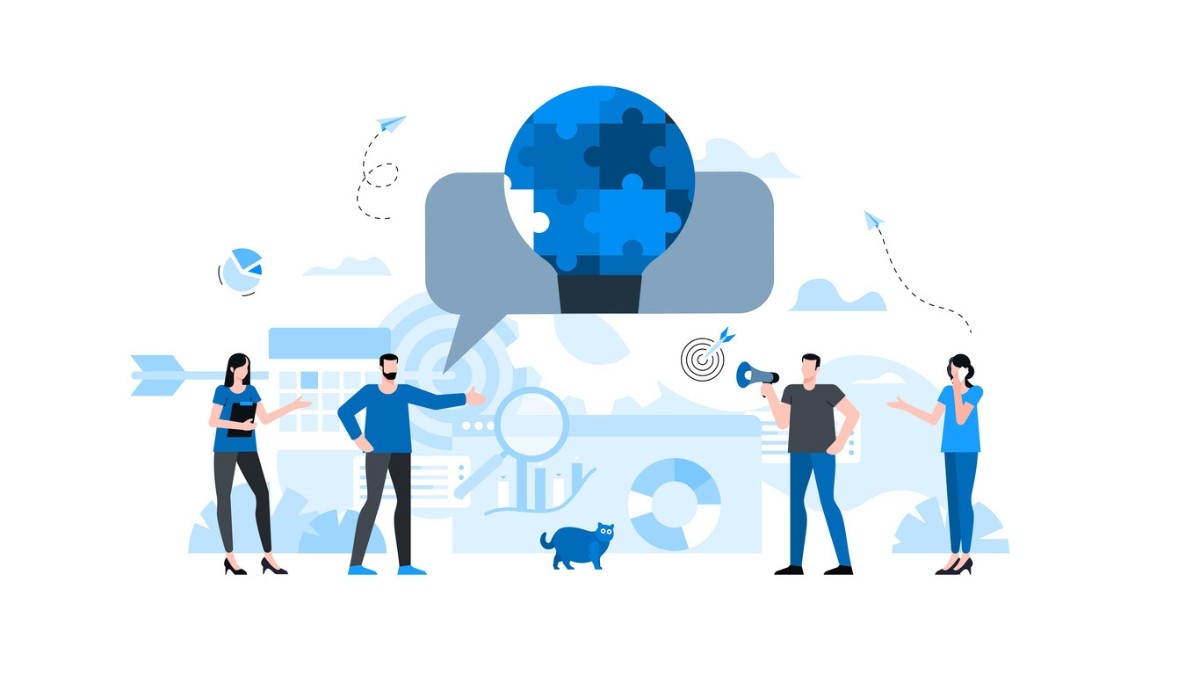What Is NLP in Machine Learning?
By
Samantha Cox
•
Jul 8, 2025
Natural Language Processing (NLP) is a key area in artificial intelligence that focuses on enabling computers to understand, process, and generate human language. NLP plays a critical role in various applications, from virtual assistants and chatbots to sentiment analysis and language translation. In this article, we’ll walk through the fundamentals, key techniques, and real-world benefits of NLP. And if you’re a recruiter looking to hire top NLP talent or an AI engineer staying ahead of the curve, Fonzi AI can help you identify the right experts and streamline the hiring process with AI-driven precision.
Key Takeaways
Natural Language Processing (NLP) enables computers to understand and generate human language, essential for tasks like speech recognition and text analysis.
NLP provides numerous benefits such as automating repetitive tasks, enhancing data analysis, and improving search engine capabilities across various industries.
Despite advancements, challenges such as handling ambiguity, mitigating bias in training data, and adapting to evolving language patterns persist in NLP applications.
What is Natural Language Processing (NLP)?

Natural Language Processing (NLP) is a subfield of computer science and artificial intelligence that empowers computers to understand and generate human language. Leveraging various computational techniques, NLP enables machines to interpret human language, allowing them to engage in meaningful interactions with users. This capability is essential for tasks such as speech recognition software, text analysis, natural language generation, and natural language understanding, bridging the gap between human communication and computer interpretation.
The development of NLP systems draws from multiple disciplines, including computer science, artificial intelligence, and computational linguistics, each contributing essential insights for effective language processing. However, the complexities of human language, such as slang, dialects, and unique grammatical structures, pose significant challenges for NLP, making it crucial to understand human language.
Despite these hurdles, advancements in large language models have significantly enhanced machine understanding and processing of textual data.
Key Benefits of NLP

NLP offers a multitude of benefits across various industries, streamlining operations, increasing productivity, and simplifying processes. It saves time and effort while maintaining quality, making it an invaluable tool for businesses.
From automating repetitive tasks to enhancing data analysis and improving search capabilities, NLP is transforming how organizations operate.
Automating Repetitive Tasks
NLP can automate numerous repetitive tasks, particularly in customer support and recruitment. Chatbots that utilize NLP are capable of addressing common customer inquiries. This allows human agents to focus on more intricate problems. Additionally, NLP can categorize customer inquiries, directing them to the relevant departments quickly.
In the recruitment sector, platforms like Fonzi leverage AI technology to automate and streamline hiring processes, significantly reducing the time required to find and hire top-tier AI engineers.
Enhanced Data Analysis
As the volume of unstructured data grows daily, NLP is crucial for efficient analysis and understanding. Utilizing text mining techniques, NLP can extract subjective qualities, such as attitudes and emotions, during sentiment analysis. This capability allows businesses to gain valuable insights from unstructured text data, identifying patterns, trends, and sentiments that aid in understanding customer preferences and market conditions.
In the insurance industry, for example, NLP can identify inefficiencies and optimize processing in claims management.
Improved Search Capabilities
NLP significantly enhances search engine capabilities by moving beyond simple keyword matching to analyze the meaning of user queries. This understanding of context leads to more precise and relevant search outcomes. By grasping user intent and providing accurate results, NLP improves the efficiency and relevance of search engines, thereby enhancing the overall user experience.
Core Techniques in NLP
NLP employs a variety of core NLP techniques to process, analyze, and generate human language. These techniques can be categorized into several key areas, including text preprocessing, feature extraction, and model training and evaluation. Each of these techniques plays a crucial role in enabling computers to perform various NLP tasks, from speech recognition to text classification and natural language generation.
Text Preprocessing
Text preprocessing is a fundamental step in NLP, involving the preparation of raw text for analysis. This process includes tokenization, which splits text into smaller units like words or sentences, making it easier to analyze. Stemming is another technique that reduces words to their base forms, aiding in standardization.
Additionally, removing stop words (common words that carry little informational value) improves the relevance of the analysis.
Feature Extraction
Feature extraction converts raw text into numerical data for analysis, a critical step in NLP. Methods like Bag of Words focus on word frequency, while TF-IDF adjusts word scores based on their occurrence across documents, highlighting their importance.
These techniques help identify patterns and trends within large datasets, facilitating efficient text mining and summarization.
Model Training and Evaluation
Training and evaluating NLP models involve fine-tuning model parameters to enhance performance. Common evaluation metrics include:
Accuracy
Precision
Recall
These metrics together provide a comprehensive view of model performance. They ensure that NLP models are reliable and effective in performing various tasks, from machine translation to entity recognition.
Approaches to NLP

Different approaches to NLP have evolved over time, each contributing to the field’s advancement. These approaches include:
Rules-based systems
Statistical methods
Deep learning models. Each method offers unique advantages and challenges, shaping the way NLP is implemented and utilized.
Rules-Based Approach
Traditional grammatical rules-based systems rely on a fixed set of linguistic rules to interpret spoken language. While these systems can be effective for specific tasks, they lack the flexibility to adapt to new data and evolving language patterns. This limitation has led to the development of more dynamic approaches, including the use of a language model and language translation.
Statistical Methods
Statistical methods marked a significant shift in NLP, introducing data-driven techniques like machine learning and regression. These machine-learning methods analyze language using probabilistic models, allowing for more accurate and adaptable interpretations in statistical NLP and supporting machine-learning research.
Hidden Markov models, for example, revolutionized part-of-speech tagging by leveraging statistical approaches, and such models have significant meaning as foundational tools in this area.
Deep Learning Models
Deep learning models, such as transformers and neural learning networks, have significantly advanced NLP capabilities. These models leverage large datasets to learn patterns and relationships that traditional methods may miss. By utilizing various deep learning methods, a deep learning model can help NLP systems perform complex tasks like content generation and entity recognition with remarkable accuracy, enhancing NLP modeling efforts. Additionally, the NLP model plays a crucial role in optimizing these processes.
Common NLP Tasks
NLP encompasses a wide range of tasks, each essential for processing and understanding human language. These tasks include:
Coreference resolution
Named entity recognition
Part-of-speech tagging
Word sense disambiguation Each task plays a critical role in enabling machines to interpret and generate human-like responses.
Named Entity Recognition (NER)
Named Entity Recognition (NER) is a technique used to identify and classify entities within text, ensuring that the same entity is categorized correctly. By categorizing entities into predefined groups like names, locations, and dates, NER systems enhance data management and improve the accuracy of information retrieval.
Part-of-Speech Tagging
Part-of-speech tagging assigns grammatical categories to individual words based on context and their semantic relationships. This technique uses algorithms to label parts of speech, such as nouns, verbs, and adjectives, facilitating a better understanding of the text’s syntactic structure through semantic analysis and constituency parsing.
Word Sense Disambiguation
Word sense disambiguation involves determining the intended meaning of a word meaning within its context. Examining the word in relation to its surrounding text allows NLP systems to select the appropriate meaning for words with multiple interpretations, enhancing overall comprehension.
Challenges in NLP

Despite its advancements, NLP faces several challenges due to the inherent complexities of human language. These challenges include handling ambiguity, addressing bias in training data, and adapting to evolving language patterns. Each of these issues requires careful consideration and innovative solutions.
Handling Ambiguity
Ambiguity in human language presents a significant challenge for NLP models. Phrasing ambiguities and irregularities can create uncertainty, making it difficult for machines to accurately interpret meanings. Precise algorithms are essential to mitigate these risks and ensure reliable language processing.
Bias in Training Data
Bias in training data can significantly impact the performance of NLP models. Data sourced from online platforms often reflects societal prejudices, which can lead to biased outcomes in NLP applications.
Ensuring diversity and representation in training datasets is crucial to mitigating these biases.
Evolving Language
The constant evolution of language poses an ongoing challenge for NLP. New vocabulary and shifts in language usage can affect the accuracy of NLP systems, requiring continuous adaptation. Programmers must ensure that NLP applications and computer programs can handle these changes to maintain their effectiveness.
NLP Applications Across Industries

NLP’s versatility makes it applicable across various industries, enhancing efficiency, productivity, and performance. From finance to healthcare and legal sectors, NLP simplifies communication between humans and machines, facilitating better collaboration and decision-making.
Finance
In the financial sector, NLP accelerates information mining from financial statements and news, enabling more informed trading decisions. Analyzing data trends helps financial professionals make better investment choices and optimize their strategies.
Healthcare
NLP can analyze vast amounts of unstructured patient data from electronic health records, providing valuable insights for healthcare providers. Automating the summarization of clinical notes and identifying hidden patterns in medical reports, NLP enhances decision-making support and predictive analytics for diseases.
Legal
In the legal industry, NLP technology is employed to:
Efficiently extract critical information from extensive legal documents
Automate contract review and identify key clauses
Streamline legal research by summarizing large volumes of text
Improve the efficiency of information retrieval and document automation
How Fonzi Enhances AI Hiring
Fonzi is a specialized marketplace that connects companies with highly skilled AI engineers, optimizing the recruitment process. Leveraging structured evaluations and innovative AI technology, Fonzi makes hiring both fast and scalable.
Structured Evaluations
Fonzi employs structured evaluations with built-in fraud detection and bias audits to ensure high-quality candidate assessments. These rigorous evaluations help maintain a fair hiring process, enhancing the overall quality of recruitment.
Fast and Scalable Hiring
Fonzi’s platform is designed to streamline the recruitment process, enabling organizations to make hiring efficient and scalable. The hiring process often concludes within three weeks, significantly accelerating recruitment to meet operational demands.
This efficiency is particularly beneficial for companies with urgent staffing needs, ensuring they can quickly find and onboard top-tier AI talent.
Candidate Experience
Fonzi prioritizes an excellent candidate experience by providing personalized communications and timely updates throughout the hiring process. This transparent and structured approach ensures that candidates feel engaged and well-matched to suitable roles, improving their overall satisfaction and engagement.
Enhancing the candidate experience ensures that both companies and candidates benefit from a seamless recruitment process.
Summary
Natural Language Processing (NLP) is a transformative field that bridges the gap between human communication and computer interpretation. From automating repetitive tasks to enhancing data analysis and improving search capabilities, NLP offers numerous benefits across various industries. The core techniques and approaches in NLP, including text preprocessing, feature extraction, and deep learning models, enable machines to perform complex language-related tasks effectively. However, challenges such as handling ambiguity, addressing bias in training data, and adapting to evolving language must be carefully managed.
As NLP continues to evolve, its applications across industries like finance, healthcare, and legal will further demonstrate its versatility and impact. Platforms like Fonzi are revolutionizing AI hiring by providing structured evaluations and a seamless candidate experience, making the recruitment process fast, consistent, and scalable.




